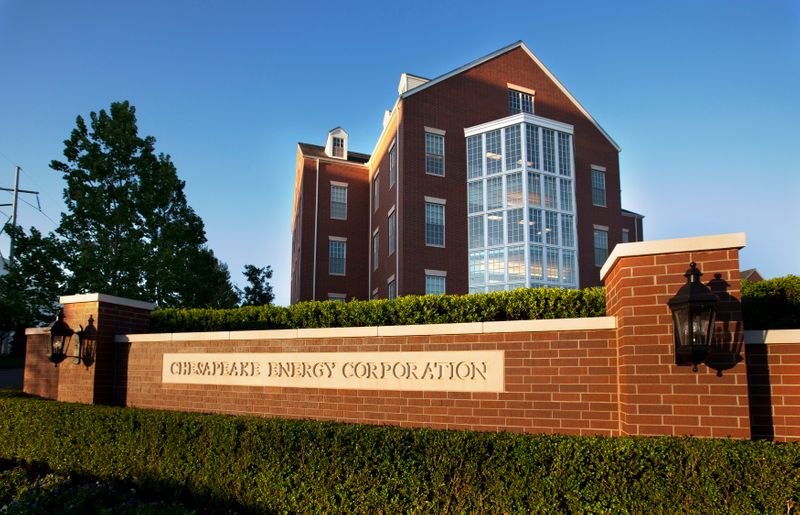 © Reuters. To match Special Report CHESAPEAKE-MCCLENDON/LOANS
© Reuters. To match Special Report CHESAPEAKE-MCCLENDON/LOANS
By David French and Rama Venkat
NEW YORK (Reuters) - Chesapeake Energy Corp (N:) filed for Chapter 11 on Sunday, becoming the largest U.S. oil and gas producer to seek bankruptcy protection in recent years as it bowed to heavy debts and the impact of the coronavirus outbreak on energy markets.
The filing marks an end of an era for the Oklahoma City-based shale pioneer, and comes after months of negotiations with creditors to lay the groundwork for the restructuring. Reuters first reported in March the company had retained debt advisers.
Over more than two decades, late wildcatter Aubrey McClendon built Chesapeake into one of the world’s biggest producers before resigning in 2013, after a corporate governance crisis and investor concerns over his heavy spending.
At that time, current CEO Doug Lawler inherited a company saddled with about $13 billion in debt. Lawler managed to chip at the debt pile with spending cuts and asset sales, but this year's historic oil price rout left Chesapeake without the ability to refinance that debt.
"Despite having removed over $20 billion of leverage and financial commitments, we believe this restructuring is necessary for the long-term success and value creation of the business," Lawler said in a statement announcing the filing.
Under the restructuring plan, Chesapeake will eliminate approximately $7 billion of its debt, the statement said. A separate court filing indicated that Chesapeake has liabilities worth more than $10 billion, while its assets were also listed as being valued at upwards of $10 billion.
The company has entered into a restructuring support agreement, which has the full backing of lenders to its main revolving credit facility - some of which are providing $925 million of debtor-in-possession (DIP) financing which will help support its operations during the bankruptcy proceedings.
The agreement also has backing from portions of other creditor classes, including those behind 87% of its term loan, and holders of approximately 60% and 27%, respectively, of its senior secured second lien notes due 2025, and senior unsecured notes.
While the statement does not name Chesapeake's creditors, investment firm Franklin Resources (NYSE:) is among the most significant. On June 15, Reuters reported that Chesapeake's impending restructuring would turn over control of the company to creditors including Franklin.
Chesapeake also has agreed the principal terms for a $2.5 billion exit financing, while some of its lenders and secured note holders have agreed to backstop a $600 million offering of new shares, to take place upon exiting the Chapter 11 process, the statement added.
Chesapeake will be the largest bankruptcy of an U.S. oil and gas producer since at least the start of 2015, when law firm Haynes & Boone began publishing data on restructurings.
The filing came in the U.S. Bankruptcy Court for the Southern District of Texas. Chesapeake's team of advisers are investment banks Rothschild & Co and Intrepid Partners, law firm Kirkland & Ellis LLP, and turnaround specialists Alvarez & Marsal.
Fusion Media or anyone involved with Fusion Media will not accept any liability for loss or damage as a result of reliance on the information including data, quotes, charts and buy/sell signals contained within this website. Please be fully informed regarding the risks and costs associated with trading the financial markets, it is one of the riskiest investment forms possible.
https://news.google.com/__i/rss/rd/articles/CBMibWh0dHBzOi8vd3d3LmludmVzdGluZy5jb20vbmV3cy9zdG9jay1tYXJrZXQtbmV3cy9zaGFsZS1waW9uZWVyLWNoZXNhcGVha2UtZW5lcmd5LWZpbGVzLWZvci1iYW5rcnVwdGN5LTIyMTQ1MzjSAQA?oc=5
2020-06-28 22:30:00Z
52780884659420
Tidak ada komentar:
Posting Komentar